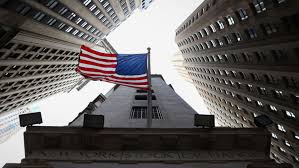
U.S. corporate profits staged a strong recovery in the second quarter, lifting confidence that the economy remains resilient despite trade pressures and an uncertain global backdrop. Profits rebounded sharply after a steep decline in the first three months of the year, while gross domestic product (GDP) growth was revised higher as consumer spending and business investment proved stronger than initially estimated.
The new data highlight how domestic demand, efficiency gains, and improved inventory management supported American companies in the April-to-June period. At the same time, the higher GDP reading underscores the continued strength of consumer activity and capital expenditures, even as tariffs and labor market concerns weigh on future prospects.
Rebound in Corporate Profits
After a difficult start to the year marked by falling margins, second-quarter profits from current production rose by more than $65 billion. This improvement represented a decisive reversal from the $90 billion loss in the first quarter, suggesting that companies were able to navigate tariff pressures more effectively and pass along some costs to consumers.
One of the key factors driving the rebound was stronger domestic demand. Consumer spending, particularly on services, remained robust in the spring, offsetting softer spending on goods. Service industries such as health care, travel, entertainment, and professional services benefitted as households continued to spend despite higher prices.
Another factor was improved inventory management. Many firms had overstocked products earlier in the year in anticipation of tariffs, which created distortions in first-quarter profits. As supply chains stabilized in the second quarter, companies adjusted their stock levels more efficiently, reducing storage costs and smoothing production schedules.
Large corporations in manufacturing, retail, and technology also benefited from cost-cutting strategies and productivity gains. The adoption of automation and digital platforms helped reduce labor costs, while some firms shifted sourcing of materials to countries less affected by U.S. tariffs, easing input expenses.
Drivers of Higher GDP Growth
The U.S. economy expanded at a 3.3% annualized rate in the second quarter, up from an initial estimate of 3.0%. The revision was driven by stronger-than-expected consumer spending and a surge in business investment.
Consumer spending, which accounts for nearly two-thirds of U.S. economic activity, was more resilient than earlier forecasts suggested. Households spent more on services such as health care, travel, and leisure, and continued to purchase durable goods like automobiles and electronics despite higher borrowing costs. This willingness to spend reflected steady job creation in the first half of the year and household savings that remained above pre-pandemic averages.
Business investment was another major contributor to the upward revision. Companies increased spending on equipment, software, and infrastructure projects, particularly in areas tied to automation, renewable energy, and supply chain modernization. These investments were supported in part by government incentives and by firms’ desire to reduce long-term operating costs in an environment of elevated wages and global competition.
Gross domestic income (GDI), an alternative measure of growth, also improved, rising at a 4.8% pace compared to near stagnation in the first quarter. Taken together, GDP and GDI averaged out to 4% growth, pointing to broad-based economic momentum that was not fully captured in the initial estimates.
Balancing Risks and Outlook
While the rebound in corporate profits and higher GDP growth are encouraging, risks remain for the second half of the year. Tariffs on imports have raised costs for businesses across multiple sectors, from manufacturing to retail, threatening to erode profit margins if consumer demand softens. Automakers and industrial firms have warned that trade-related costs could remain elevated well into next year.
At the same time, the labor market is showing early signs of easing, with slower job creation and reports of reduced hiring in some industries. Federal Reserve officials have acknowledged these risks, signaling a readiness to adjust interest rates if economic momentum begins to falter. Still, inflationary pressures persist, complicating the central bank’s policy choices.
Economists caution that while headline GDP growth looks strong, much of the recent volatility reflects swings in trade flows caused by tariff-related import surges and subsequent slowdowns. For a clearer picture, analysts focus on final sales to domestic private purchasers — a measure that strips out trade, inventories, and government spending. This metric rose at a 1.9% pace in the second quarter, up from an earlier estimate of 1.2%, underscoring steady underlying demand even when trade distortions are excluded.
Looking ahead, many expect overall growth to moderate in the second half as higher borrowing costs filter through the economy and businesses confront lingering trade uncertainty. Full-year growth is projected to settle around 1.5%, below the 2.8% achieved in 2024 and only slightly beneath the level the Federal Reserve views as sustainable without fueling inflation.
In sum, the rebound in U.S. corporate profits during the second quarter was supported by resilient consumer spending, improved supply chain management, and stronger business investment. Meanwhile, GDP growth was revised upward as households and companies demonstrated greater-than-expected economic strength. Together, these factors highlight the underlying momentum of the U.S. economy, even as it faces headwinds from tariffs, inflation, and global uncertainty.
(Source:www.thedailystar.net)
The new data highlight how domestic demand, efficiency gains, and improved inventory management supported American companies in the April-to-June period. At the same time, the higher GDP reading underscores the continued strength of consumer activity and capital expenditures, even as tariffs and labor market concerns weigh on future prospects.
Rebound in Corporate Profits
After a difficult start to the year marked by falling margins, second-quarter profits from current production rose by more than $65 billion. This improvement represented a decisive reversal from the $90 billion loss in the first quarter, suggesting that companies were able to navigate tariff pressures more effectively and pass along some costs to consumers.
One of the key factors driving the rebound was stronger domestic demand. Consumer spending, particularly on services, remained robust in the spring, offsetting softer spending on goods. Service industries such as health care, travel, entertainment, and professional services benefitted as households continued to spend despite higher prices.
Another factor was improved inventory management. Many firms had overstocked products earlier in the year in anticipation of tariffs, which created distortions in first-quarter profits. As supply chains stabilized in the second quarter, companies adjusted their stock levels more efficiently, reducing storage costs and smoothing production schedules.
Large corporations in manufacturing, retail, and technology also benefited from cost-cutting strategies and productivity gains. The adoption of automation and digital platforms helped reduce labor costs, while some firms shifted sourcing of materials to countries less affected by U.S. tariffs, easing input expenses.
Drivers of Higher GDP Growth
The U.S. economy expanded at a 3.3% annualized rate in the second quarter, up from an initial estimate of 3.0%. The revision was driven by stronger-than-expected consumer spending and a surge in business investment.
Consumer spending, which accounts for nearly two-thirds of U.S. economic activity, was more resilient than earlier forecasts suggested. Households spent more on services such as health care, travel, and leisure, and continued to purchase durable goods like automobiles and electronics despite higher borrowing costs. This willingness to spend reflected steady job creation in the first half of the year and household savings that remained above pre-pandemic averages.
Business investment was another major contributor to the upward revision. Companies increased spending on equipment, software, and infrastructure projects, particularly in areas tied to automation, renewable energy, and supply chain modernization. These investments were supported in part by government incentives and by firms’ desire to reduce long-term operating costs in an environment of elevated wages and global competition.
Gross domestic income (GDI), an alternative measure of growth, also improved, rising at a 4.8% pace compared to near stagnation in the first quarter. Taken together, GDP and GDI averaged out to 4% growth, pointing to broad-based economic momentum that was not fully captured in the initial estimates.
Balancing Risks and Outlook
While the rebound in corporate profits and higher GDP growth are encouraging, risks remain for the second half of the year. Tariffs on imports have raised costs for businesses across multiple sectors, from manufacturing to retail, threatening to erode profit margins if consumer demand softens. Automakers and industrial firms have warned that trade-related costs could remain elevated well into next year.
At the same time, the labor market is showing early signs of easing, with slower job creation and reports of reduced hiring in some industries. Federal Reserve officials have acknowledged these risks, signaling a readiness to adjust interest rates if economic momentum begins to falter. Still, inflationary pressures persist, complicating the central bank’s policy choices.
Economists caution that while headline GDP growth looks strong, much of the recent volatility reflects swings in trade flows caused by tariff-related import surges and subsequent slowdowns. For a clearer picture, analysts focus on final sales to domestic private purchasers — a measure that strips out trade, inventories, and government spending. This metric rose at a 1.9% pace in the second quarter, up from an earlier estimate of 1.2%, underscoring steady underlying demand even when trade distortions are excluded.
Looking ahead, many expect overall growth to moderate in the second half as higher borrowing costs filter through the economy and businesses confront lingering trade uncertainty. Full-year growth is projected to settle around 1.5%, below the 2.8% achieved in 2024 and only slightly beneath the level the Federal Reserve views as sustainable without fueling inflation.
In sum, the rebound in U.S. corporate profits during the second quarter was supported by resilient consumer spending, improved supply chain management, and stronger business investment. Meanwhile, GDP growth was revised upward as households and companies demonstrated greater-than-expected economic strength. Together, these factors highlight the underlying momentum of the U.S. economy, even as it faces headwinds from tariffs, inflation, and global uncertainty.
(Source:www.thedailystar.net)














